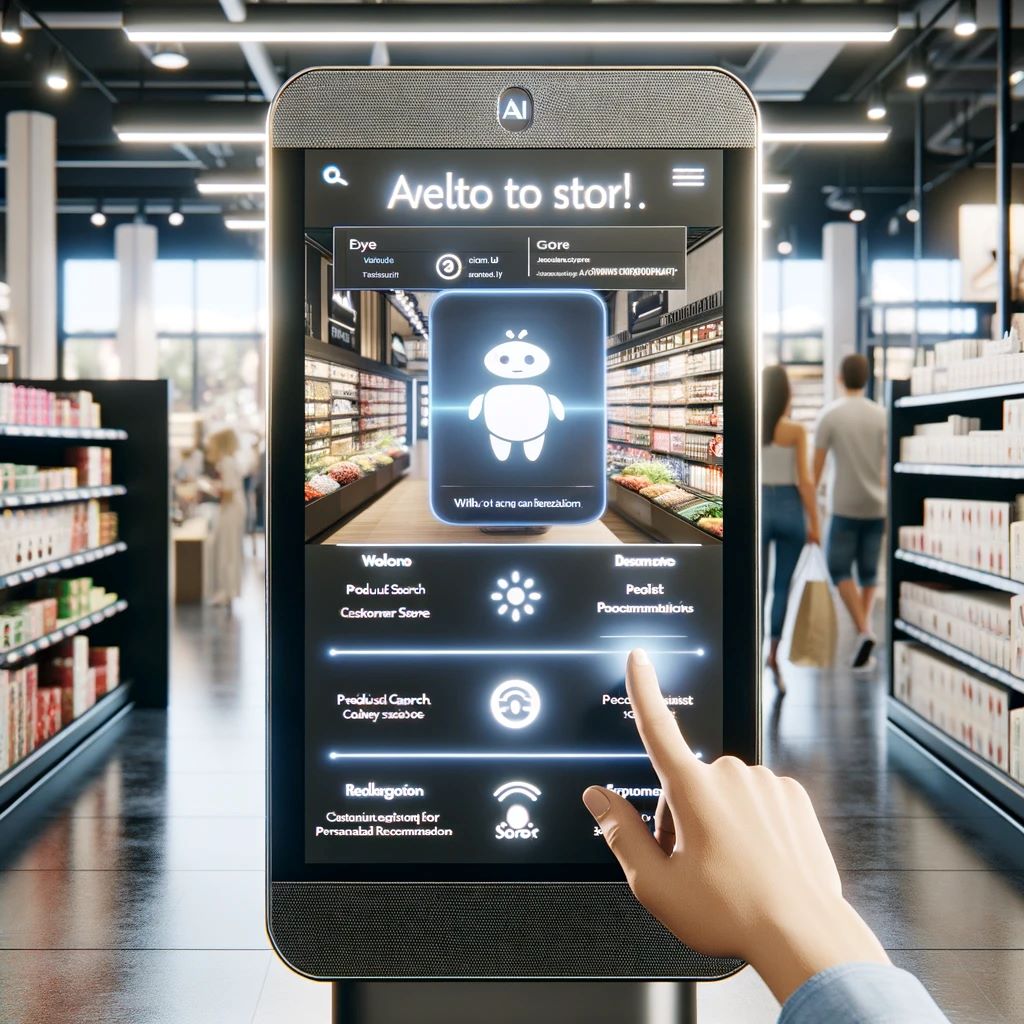
AI chatbots have emerged as a transformative force in the retail industry, revolutionizing the way businesses interact with customers, manage operations, and drive sales.
As digital technologies continue to evolve, AI chatbots are becoming an indispensable tool for retailers seeking to enhance customer experience, streamline processes, and stay competitive in a rapidly changing market.
Introduction to AI Chatbots in Retail
AI chatbots in the retail sector are software programs designed to simulate conversation with human users over the internet.
These chatbots leverage artificial intelligence (AI) and natural language processing (NLP) technologies to understand customer queries and provide relevant, personalized responses.
Retailers are deploying AI chatbots across various platforms, including websites, mobile apps, and social media channels, to offer 24/7 customer support, personalized shopping assistance, and efficient order management.
Enhancing Customer Experience
One of the primary benefits of AI chatbots in retail is their ability to enhance the customer experience.
Chatbots can provide instant responses to customer inquiries, reducing wait times and improving satisfaction levels.
For example, H&M’s interactive chatbot helps customers navigate their vast catalog and make purchase decisions by curating personalized shopping experiences based on user responses.
Similarly, Starbucks’ Barista Chatbot enables customers to place orders and make payments with ease, offering an estimated pickup time and remembering order preferences for future transactions.
Streamlining Operations and Reducing Costs
AI chatbots also streamline retail operations and reduce costs by automating routine tasks such as answering FAQs, managing inventory inquiries, and processing orders.
This automation allows human employees to focus on more complex and value-added activities, thereby increasing productivity and efficiency.
Furthermore, chatbots can handle a large volume of customer interactions simultaneously, reducing the need for extensive customer service teams and cutting operational costs.
Driving Sales and Personalization
AI chatbots contribute to driving sales by offering personalized product recommendations based on customer preferences and past purchase history.
By analyzing customer data, chatbots can suggest products that users are likely to be interested in, thereby increasing the chances of conversion.
For instance, Sephora’s Reservation Assistant chatbot not only facilitates appointment bookings but also plays a significant role in recommending products and services to customers based on their beauty preferences.
Implementing AI Chatbots: Best Practices
Successfully implementing AI chatbots in the retail industry involves several best practices.
Retailers should start with a clear understanding of their audience and objectives, developing chatbots that address specific customer needs and business goals.
It’s also crucial to ensure a seamless handover process between chatbots and human agents for complex queries, maintaining the balance between automation and human touch.
Retailers should leverage NLP and machine learning to enhance the chatbot’s understanding of human language and improve its ability to deliver personalized experiences.
Additionally, continuously collecting and analyzing customer feedback through chatbots can provide valuable insights for improving products, services, and the overall shopping experience.
The Future of AI Chatbots in Retail
The future of AI chatbots in the retail industry looks promising, with advancements in AI and machine learning technologies set to further enhance their capabilities.
As chatbots become more sophisticated, they will offer even more personalized and engaging shopping experiences, support complex customer service scenarios, and play a pivotal role in omnichannel retail strategies.
In conclusion, AI chatbots are redefining the retail landscape by improving customer experience, streamlining operations, and driving sales.
As technology continues to evolve, the adoption and integration of AI chatbots in retail will become increasingly critical for businesses looking to thrive in the digital age.
More Best Practices for Implementation
Implementing AI chatbots in the retail industry is a strategic move that requires careful planning, execution, and continuous refinement to ensure success.
Here are some best practices for AI chatbot implementation, illustrated with examples and case studies from leading retail companies.
Start Small and Scale
Best Practice: Begin with a basic chatbot that can handle frequently asked questions (FAQs) and simple customer interactions.
Gradually introduce more complex capabilities based on customer feedback and business needs.
Example: H&M’s chatbot started by offering outfit inspiration and basic customer service inquiries.
As the technology and customer acceptance evolved, they expanded the chatbot’s capabilities to include more personalized fashion advice, integrating customer preferences and past purchase history to recommend products.
Seamless Handover to Human Agents
Best Practice: Ensure there is a smooth transition from chatbot to human customer service agents when the query surpasses the chatbot’s capabilities.
This prevents customer frustration and ensures complex issues are resolved efficiently.
Case Study: Sephora’s Reservation Assistant chatbot seamlessly transfers customers to human agents when specific, personalized advice is needed that the bot cannot provide.
This blend of automated and human service enhances the customer experience, ensuring queries are resolved satisfactorily.
Leverage Natural Language Processing (NLP)
Best Practice: Incorporate NLP to improve the chatbot’s understanding of customer queries and enable more natural, conversational interactions.
Example: Starbucks’ Barista chatbot leverages NLP to understand and process a wide range of customer orders placed in natural language, from simple coffee orders to more complex customizations, providing an intuitive ordering experience.
Personalized Customer Experiences
Best Practice: Use customer data and AI to deliver personalized product recommendations and advice through chatbots.
Case Study: The North Face uses IBM Watson’s AI to power its online shopping assistant, helping customers find the perfect jacket for their needs by asking questions about location, activity, and preferences.
This personalized approach has led to higher engagement and conversion rates Source: IBM Watson Case Studies.
Continuous Learning and Improvement
Best Practice: Implement feedback loops to collect insights on chatbot interactions and customer satisfaction.
Use this data to continuously improve chatbot responses, functionalities, and user experience.
Example: Domino’s Pizza’s chatbot, “DOM,” has evolved through continuous learning from customer interactions, improving its ability to process orders, answer queries, and even handle complaints or feedback, making the order process smoother and more efficient.
Multichannel Integration
Best Practice: Deploy chatbots across multiple channels (website, mobile app, social media) to meet customers where they are and provide a consistent service experience.
Case Study: Mya, a conversational AI recruiting assistant, is used by companies to engage job applicants across various platforms, including SMS, WhatsApp, and social media.
While not a retail example, this shows how AI can provide consistent interactions across different channels, improving engagement and process efficiency Source: Mya Systems Case Studies.
Analytics and Metrics
Best Practice: Utilize analytics to track chatbot performance, customer engagement, and satisfaction metrics.
This data is invaluable for understanding how customers interact with the bot and identifying areas for improvement.
Example: American Eagle Outfitters’ chatbot analytics revealed a 25% click-through rate to the website from the chatbot, indicating high engagement and effectiveness in driving traffic.
This data helped them fine-tune their chatbot strategy to further enhance performance.
Implementing AI chatbots in retail not only requires the right technology but also a strategic approach tailored to the business’s and customers’ needs.
By following these best practices and learning from successful examples, retailers can ensure their chatbots enhance the shopping experience, improve operational efficiency, and contribute to business growth.
Unlock Your Potential in Retail Management.
Enroll in our Retail Business Academy Today




















